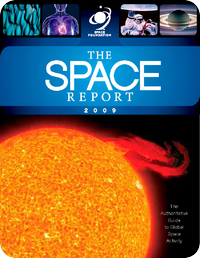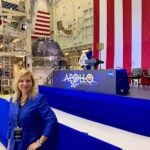Spotlight
Space Improves Health on Earth
Written by: developer
 Space products and services and their related space technology spinoffs have become part of daily life in ways that most people take for granted, and often in ways that don’t even bring space to mind. For example, many people don’t realize what a significant role space plays in health care. Some examples, excerpted from the Space Foundation’s The Space Report 2009: The Authoritative Guide to Global Space Activity:
Space products and services and their related space technology spinoffs have become part of daily life in ways that most people take for granted, and often in ways that don’t even bring space to mind. For example, many people don’t realize what a significant role space plays in health care. Some examples, excerpted from the Space Foundation’s The Space Report 2009: The Authoritative Guide to Global Space Activity:
- A microbial check valve used to disinfect drinking water on U.S. spacecraft has been adapted as the DentaPure water purification cartridge for use in dental offices. Developed by Umpqua Research and marketed by Water Security Corporation, the technology is especially practical because easy installation and longer service intervals reduce costs for dental offices. The Space Foundation has designated the technology as a Certified Space Technology and inducted it into the Space Technology Hall of Fame® in 2007.
- An optics technology for low-cost, high-volume eye screening using a light-bending technique called photorefraction is now used by pediatricians and family practitioners in schools and children’s organizations to test for vision abnormalities that are undetected by many basic screening tests. Called VisiScreen, the technology was inducted into the Space Foundation’s Space Technology Hall of Fame® in 2003.
- A collaborative effort between NASA and the University of Alabama at Birmingham (UAB) has studied fighting malaria and West Nile virus by using infrared imagery from satellites to locate warm standing water, a breeding ground for disease-carrying mosquitoes.
- Satellites collect data on pollution and environmental factors in areas with high populations of asthma sufferers to determine factors that might cause asthma attacks.
- The European Space Agency, in coordination with the Institut de Medecine et de Physiologie Spatiales, is developing a telemedicine solution to improve post-crisis management in areas struck by natural disasters or epidemics.
- In 2008, American private space traveler Richard Garriott conducted scientific and environmental research aboard the International Space Station (ISS). His tests of crystallization of proteins linked to many human diseases could help scientists understand molecular components of these proteins, an advance that could lead to developments in protein engineering and drug design. His studies of the effects of spaceflight on astronauts could facilitate early detection of osteoporosis and better understanding of back pain.
- The capacity of Barrett Technology’s whole arm manipulator (WAM) robotic arm used on the ISS has been upgraded to be used in precision operations such as minimally invasive knee surgery.
For more information on The Space Report 2009: The Authoritative Guide to Global Space Activity, or to order a copy in book, e-book or CD format, go to www.TheSpaceReport.org.
For a look at a comprehensive list of space products that now benefit life on Earth – including health care applications – go to www.SpaceConnection.org for information about the Space Foundation’s Space Certification program, which provides special recognition to companies with products and services that are tied to space exploration. Qualified products display an official seal, clearly identifying them to the public as examples of how everyone benefits from space programs.
To learn more about the prestigious Space Technology Hall of Fame®, go to www.SpaceTechHallofFame.org. The Space Technology of Fame honors innovations by organizations and individuals who transform space technology into commercial products that improve life on Earth.
This article is part of Space Watch: October 2009 (Volume: 8, Issue: 10).


